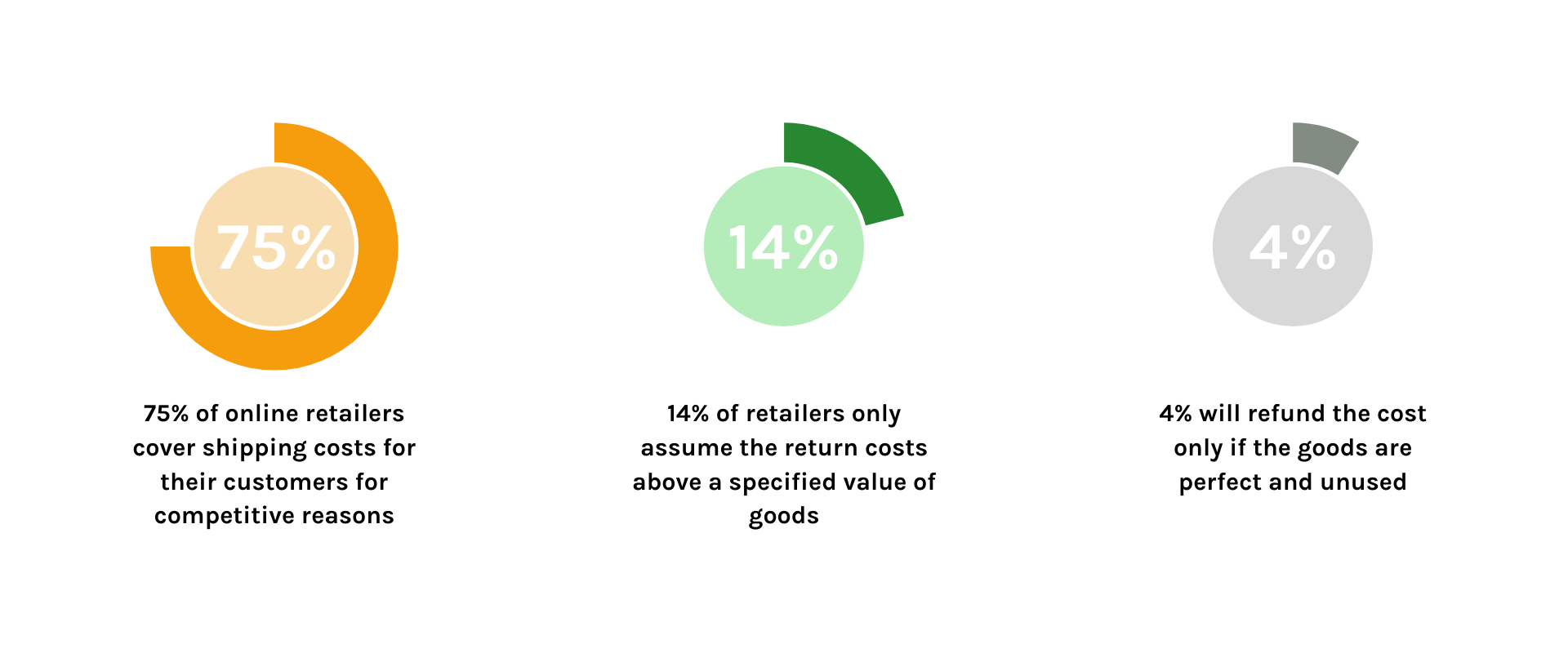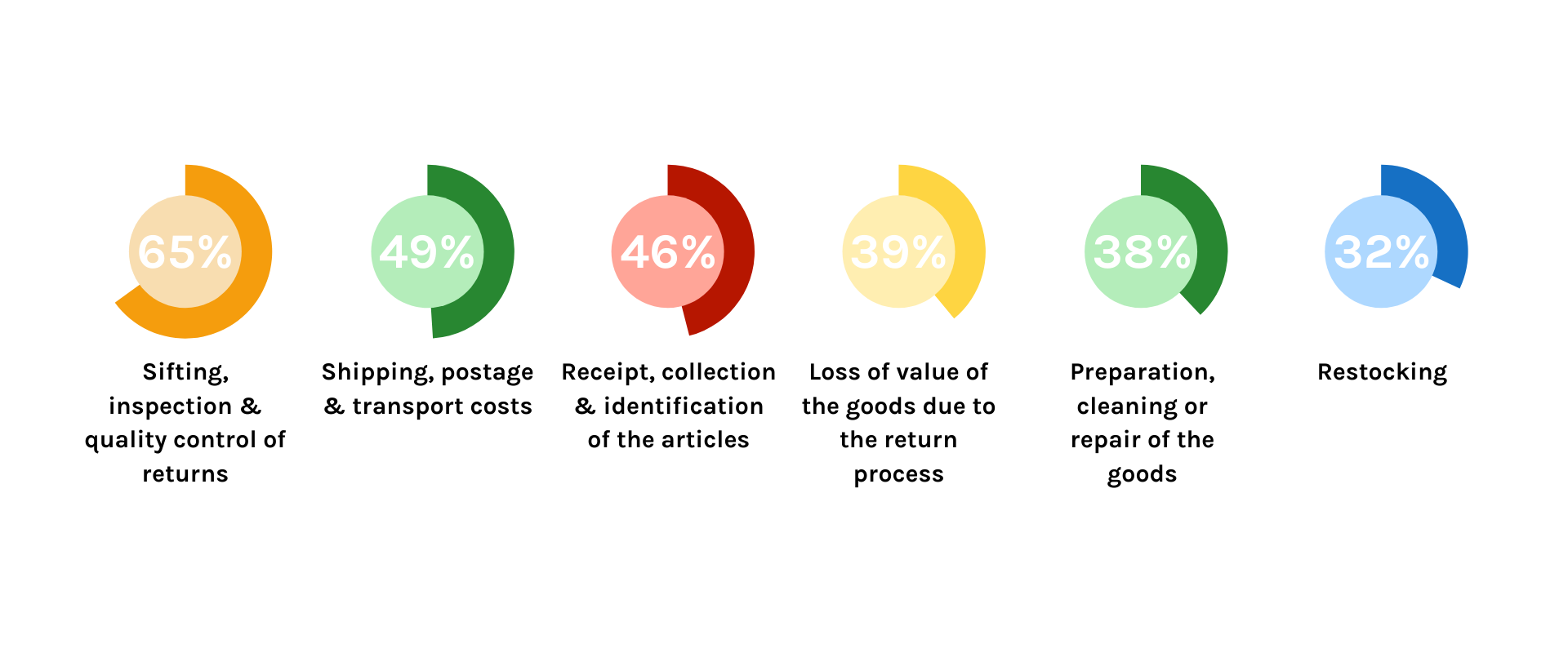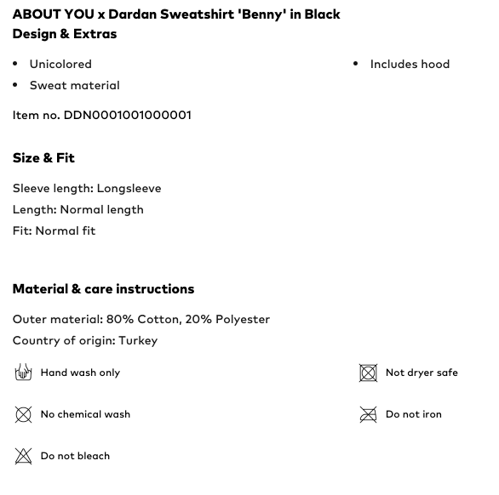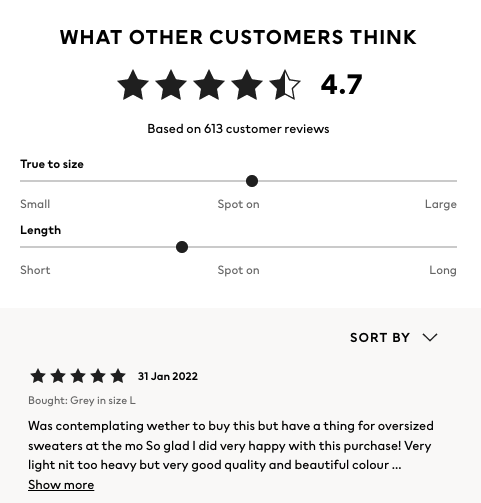Auto-Updating Copy | Automated Texts + Product Descriptions
Lower the Return Rate: 6 Tips for Fewer Returns in Online Retail
Reading Time 8 mins | February 9, 2022 | Written by: Saim Alkan

High returns are a familiar issue in online retailing. Prior to the Covid-19 pandemic, a significant amount of goods is already being ordered online - and returned. This behavior of consumers has intensified even more now with the pandemic.
This is because customers love free returns. In this way, they can order products, test them and return them as needed. Cost-free returns are an important factor when it comes to customer satisfaction - but they involve enormous costs for retailers and a big environmental impact.
In this article, we look at the types of costs retailers face and the things they can do to reduce the number of returns.
Return Management is Time-Consuming and Expensive
In a 2021 study, the EHI Retail institute has found that returns are time-consuming and expensive for online retailers. (Internetworld, 2022)
Customers are often not charged for return shipping, but the retailer does have to pay for it:

The biggest cost factors identified in the study participants' responses to the study are:

Another well-known fact is that the returns rate in the fashion sector is extremely high. This is because the most frequently returned products are clothing and shoes. In some cases, return rates of over 55% have been observed in these product ranges. (Retourenforschung.de, 2022)
But how can these costs and efforts be reduced, i.e. how can the return rate be lowered?
6 Tips for Reducing the Returns Rate
There are many options for online retailers to lower or avoid returns where possible.
We will focus on the following 6 possibilities:
1. Compelling Product Descriptions for All-Encompassing Information
Detailed product descriptions should answer every question the potential customer may have. It is vital that all relevant information is included.
Needless to say, the included information must be all correct. Nonetheless, this is precisely the problem that often arises. The listed product specifications are frequently incorrect.
This can occur due to errors when writing the texts or due to incorrect implementation of manufacturer information. Online retailers frequently include these in their own store without verifying them further or adding important details.
Several examples of incorrect product descriptions and their effects have been compiled in the blog article "How to reduce return rates in your online store - it's so easy!".
Inadequate product descriptions frequently lead to returns of goods for reasons such as "item does not correspond to the product description" or "item does not fit". Customers are tempted to simply return the goods if the product details are incorrect, not detailed enough, or if significant information is missing. The buyer is left frustrated, and the retailer is faced with unnecessary costs.
Yet this is so easily avoidable!
The more detailed the product descriptions are, the clearer the idea the customer can form of the item. As a result, the likelihood of a return is reduced. Probability of return.
As an example, let's take an online store from the fashion sector.
The information about material and the fitting is essential when making a purchase decision. If the customer is then informed of the fact that the item runs large and that it is therefore recommended to order a size smaller, then a lot of issues can be avoided.
Having a clear size information and the option to convert between US and European sizes is also helpful.
The information about how tall the model wearing the item is and what size she wears is also a great help. The more information the product detail page provides, the better.

Online stores with a high number of items face the challenge of having to write a very large number of product descriptions, in some cases very extensive ones.
A user-friendly solution that saves time, money and resources for the store operator is available for this purpose - automated product descriptions using self-service software.
2. Numerous and High-Quality Images and Videos for Product Support
Apart from good product descriptions, expressive images and videos are also of great importance.
An image replaces viewing, touching and trying out the product and must therefore provide the best emotional experience possible.
Detailed photos of the product are required in order to ensure this. Also important is the possibility of zooming into the photo to identify any structures and textures. A view from different perspectives, or even better, in a 360-degree shot, is also helpful.
This allows the retailer to give customers the opportunity to look at the item from all sides and see all the relevant details.

A video can be of great advantage for products that require special explanation, such as machinery, technical devices or similar. A clear explanation with a presentation about the way the item works eliminates unclear points instantly.
3. Create Incentives Rather Than Impose Penalties
Returns are a true nightmare for retailers. This is why some major stores have started issuing notices to customers with a high rate of returns. This upsets existing and potential customers, who may then leave to the competition. However, this also reflects badly on the retailer.
A better way is to create incentives that result in a low return rate. For example, customers who do not return many or any goods will then be rewarded with a discount on the purchase price or a voucher for their next purchase.
4. Advice & Customer Reviews for Building Trust
Although detailed product descriptions and good images provide all the information about the product, in some cases customers still have unanswered questions.
Customers should be offered the opportunity to make contact in order to avoid a purchase being cancelled. Contact can be made via e-mail, chat or telephone. The retailer's advisory function not only generates trust before, during and after the purchase, but is also a way of preventing returns.
Customer reviews can also count as advice. Retailers therefore should offer their customers the possibility to provide reviews for the ordered products.
Many customers trust the reviews of others rather than the information provided by the retailer. Positive reviews strengthen the purchase decision. Customer reviews can answer questions that the retailer himself may not have considered. The retailer can use these in turn to provide the best possible advice via the call center or chat.

5. Flawless Shipping for a Great Product Experience
Flawless shipping means that the right goods are shipped in a perfect condition. Something that actually sounds self-explanatory nevertheless happens again and again in reality.
The wrong items can be goods in a different color or size than originally ordered.
That a product does not arrive damaged to the customer is connected with the correct packaging. This has to fit the item in question perfectly, i.e. protect it well and from potential damage during transportation. Filling material, the box size, as well as thickness have to be adjusted depending on the product.
6. Fast Delivery for Maximum Customer Satisfaction
When it comes to speed of delivery, Amazon is unbeatable. Not only to keep up here, fast deliveries are a must for online retailers. Another important point worth noting is that returns are also caused due to waiting too long for the goods to arrive. While waiting, the customer may find the item cheaper elsewhere. In this case, he buys the product elsewhere and simply sends back the one ordered first.
In addition, goods delivered with delay may no longer be needed. This applies to special occasions, such as the gift for the first day of school party in three days or the birthday over the weekend. When the ordered item is delivered too late, it is no longer needed and will be sent back.
Fast delivery is therefore essential for customer satisfaction.
Learning from returns
When it comes to returned goods, e-commerce retailers should not only be concerned with what the resale value of the goods is. To sustainably reduce the returns rate, it is important to determine why customers return goods. This is why the reasons for each return should be inquired about, collected and analyzed. Only this way can meaningful measures against a high rate of returns be derived for the long term. As demonstrated in this article, most of the options are quite simple to implement.
Sources:
- Internetworld (2021): So aufwendig sind Retouren für den Onlinehandel, https://www.internetworld.de/logistik/retoure/so-aufwendig-retouren-online-handel-2732151.html?utm_source=iwb_de_nl&utm_campaign=Decathlon_treibt_Transformation_zur_Sportplattform_weiter_voran_17012022&utm_medium=email, Accessed on 25/01/2022
- Retourenforschung.de (2022): Statistiken Retouren Deutschland - Definition, http://www.retourenforschung.de/definition_statistiken-retouren-deutschland.html, Accessed on 25/01/2022
- AboutYou (2022): https://www.aboutyou.de/p/kendall-for-about-you/sweatshirt-ash-7397830, Accessed on 28/01/2022
- H&M (2022): https://www2.hm.com/de_de/index.html, Accessed on 28/01/2022
Saim Alkan
Saim Rolf Alkan is Chief Executive Officer at AX Semantics and a pioneer in the field of automated content generation. After successfully working in content for years, he decided that businesses needed a better tool: one that would allow man and machine to work together to produce the volume of content needed to thrive in the digital age. Saim developed a content solution that generates high-quality texts from data in 110 languages for use in industries including e-commerce, publishing and finance. He is also a lecturer and speaker in the fields of online communication and "robot journalism" and has written several books and numerous articles.

